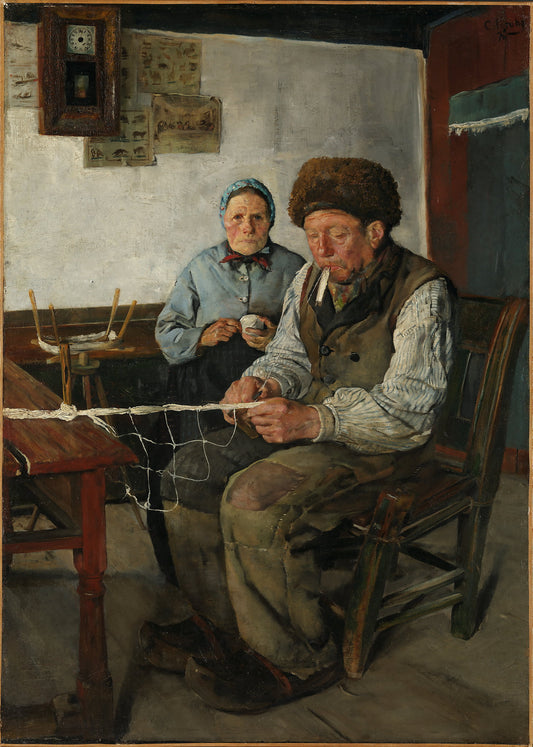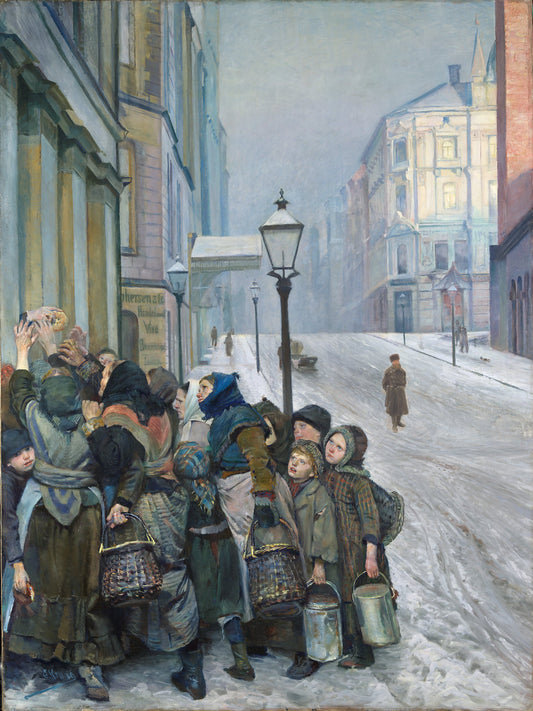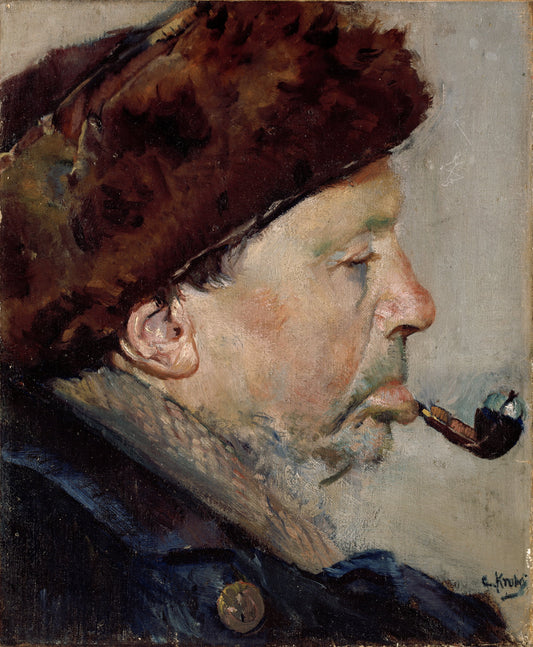Christian Krohg
Northern wind
Northern wind
Couldn't load pickup availability
High-quality reproductions from the National Museum's collection. Posters by DAIDDA are printed on Litho White Matt - 230 gram photo paper in premium quality. Artprints by DAIDDA provide outstanding colors, sharpness and durability in museum quality - printed on Moab Entrada Natural 300 gram cotton art paper. Printed on a matte surface with scratch-resistant pigment ink.
About the original:
Date: (1887)
Other titles: North Wind (ENG)
Designation: Painting
Material and technique: Oil on canvas
Technique: Oil
Material: Canvas
Dimensions: 102 x 125 cm
Subject: Visual arts
Classification: 532 - Visual arts
Motif: Working life, Maritime
Subject type: Portrait
Acquisition: Testamentary gift from Inger Johnson, received 1929
Inventory no.: NG.M.01594
Part of exhibition: Christian Krohg. Images that grip, 2012
Registration level: Single object
Owner and collection: The National Museum of Art, Architecture and Design, Visual Art Collections
Photo: Anne Hansteen
Shipping and returns
Shipping and returns
Shipping: We deliver to Scandinavia, the EU, the USA and several other countries. Please contact us if your country is not listed and we will try to arrange delivery.
Delivery time: 2-5 days within Norway, 7 days in Europe, 14 days globally.
Packaging: Our products are made to order and sent rolled in environmentally friendly packaging.
Customs Fees: International orders may be subject to customs fees, which are not included in shipping costs.
Return policy: You can return images within 14 days. See our returns page for more information.
Secure Payment: We never store your payment details. See our privacy policy for details.
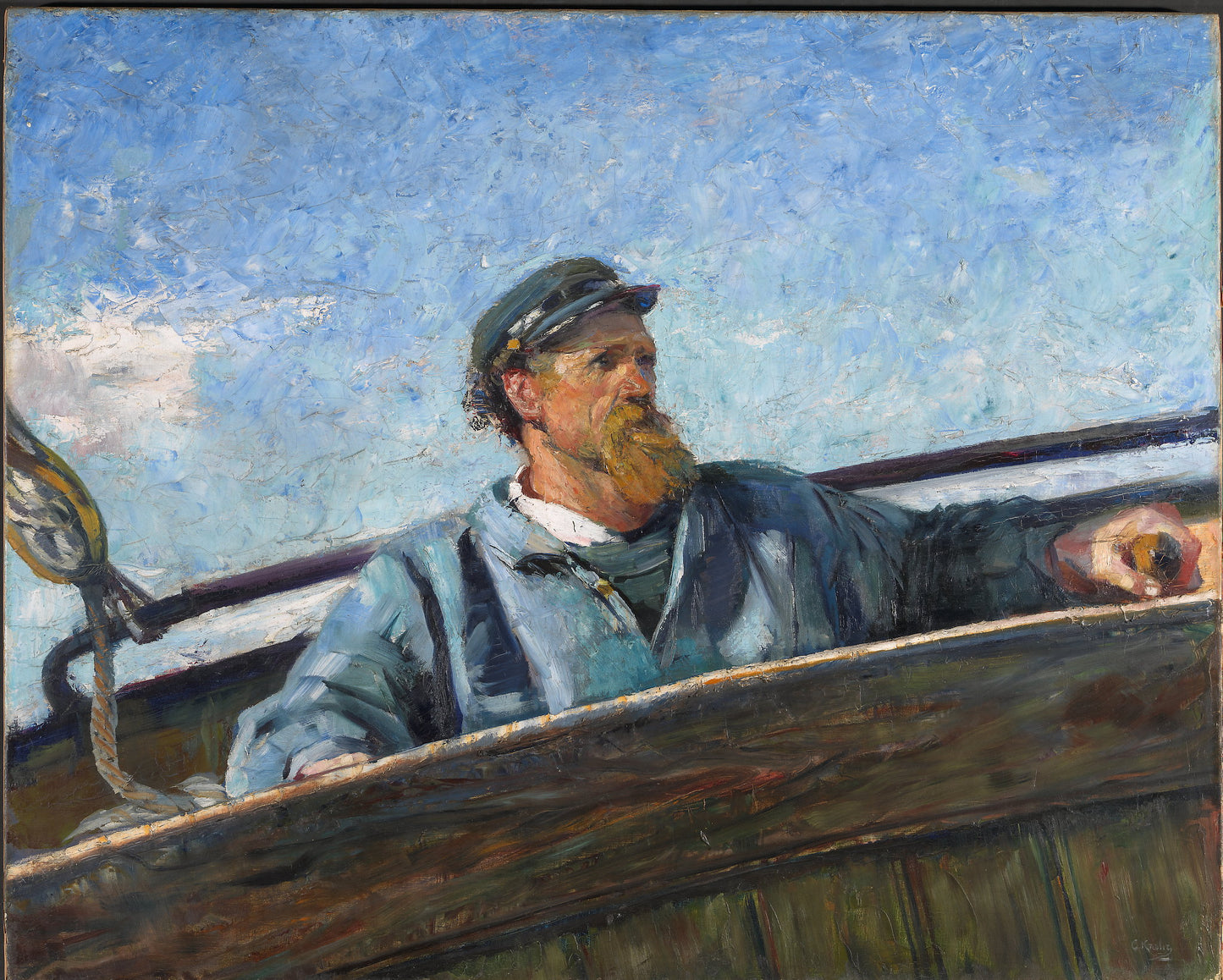
See all works
-
Garnbinderen, Niels and Ane Gaihede, Skagen
Vendor:Christian KrohgRegular price From 150,00 NOKRegular priceUnit price per -
The struggle for existence
Vendor:Christian KrohgRegular price From 150,00 NOKRegular priceUnit price per -
Mother and child
Vendor:Christian KrohgRegular price From 150,00 NOKRegular priceUnit price per -
Niels Gaihede
Vendor:Christian KrohgRegular price From 150,00 NOKRegular priceUnit price per
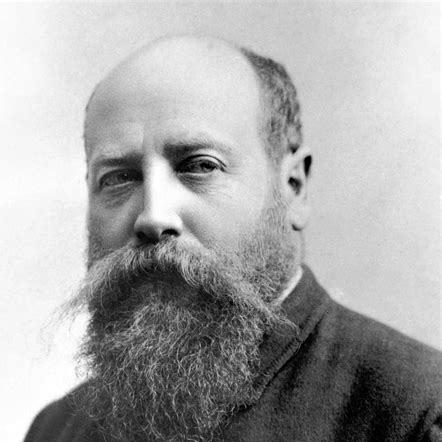
Christian Krohg
Christian Krohg was committed to justice and freedom of expression, and was one of the great Norwegian realist painters. He painted the working class in Kristiania in the 19th century with compassion and a desire for change. He had to follow in his father's footsteps and become a lawyer, but wanted to be an artist. After his law studies in Kristiania, he traveled to the art academy in Karlsruhe to receive an art education.
While many of the Norwegian art students traveled to Munich for further studies, Krohg followed his teacher Gussow to Berlin. The stay in the big city awakened Krohg's social commitment, which he retained for the rest of his life. Krohg was also influenced by Skagen, a small village in Denmark that attracted many artists. While most of the artists painted the landscape and the light, Krohg chose to paint the people who lived there and their simple lives. He became particularly close to the Gaihede family and painted many motifs depicting their everyday life.
Krohg returned to Skagen on several occasions. Among Krohg's earliest socially engaged motifs were depictions of the sypik who had fallen asleep while working. He also painted several scenes from Albertine's life, based on stories he had heard and people he had met. In the early 1880s, a group of young artists, writers and intellectuals gathered in cafes in the capital, Kristiania. They were in rebellion against the prevailing social structure and discussed moral issues, sex, drugs and free love. Krohg and Hans Jæger were leaders in the "Kristiania bohemian", and they were active in the press and wrote poems and novels. They also started the newspaper Impressionisten. Krohg later married Oda Engelhart, who was part of this circle. Krohg had a large production and a wide-ranging selection of motifs. He was particularly known for his portraits, and his ability to characterize meant that he received many portrait commissions.
From 1901 to 1909, Krohg lived mainly in Paris, where he taught at the Académie Colarossi. Here he was influenced by new currents, and his precise and realistic style changed to more dissolved forms and loose brushstrokes. The artist model also became more central to his work. When Norway's first art academy opened in 1909, Krohg became its first director and professor, a position he held until his death in 1925.


